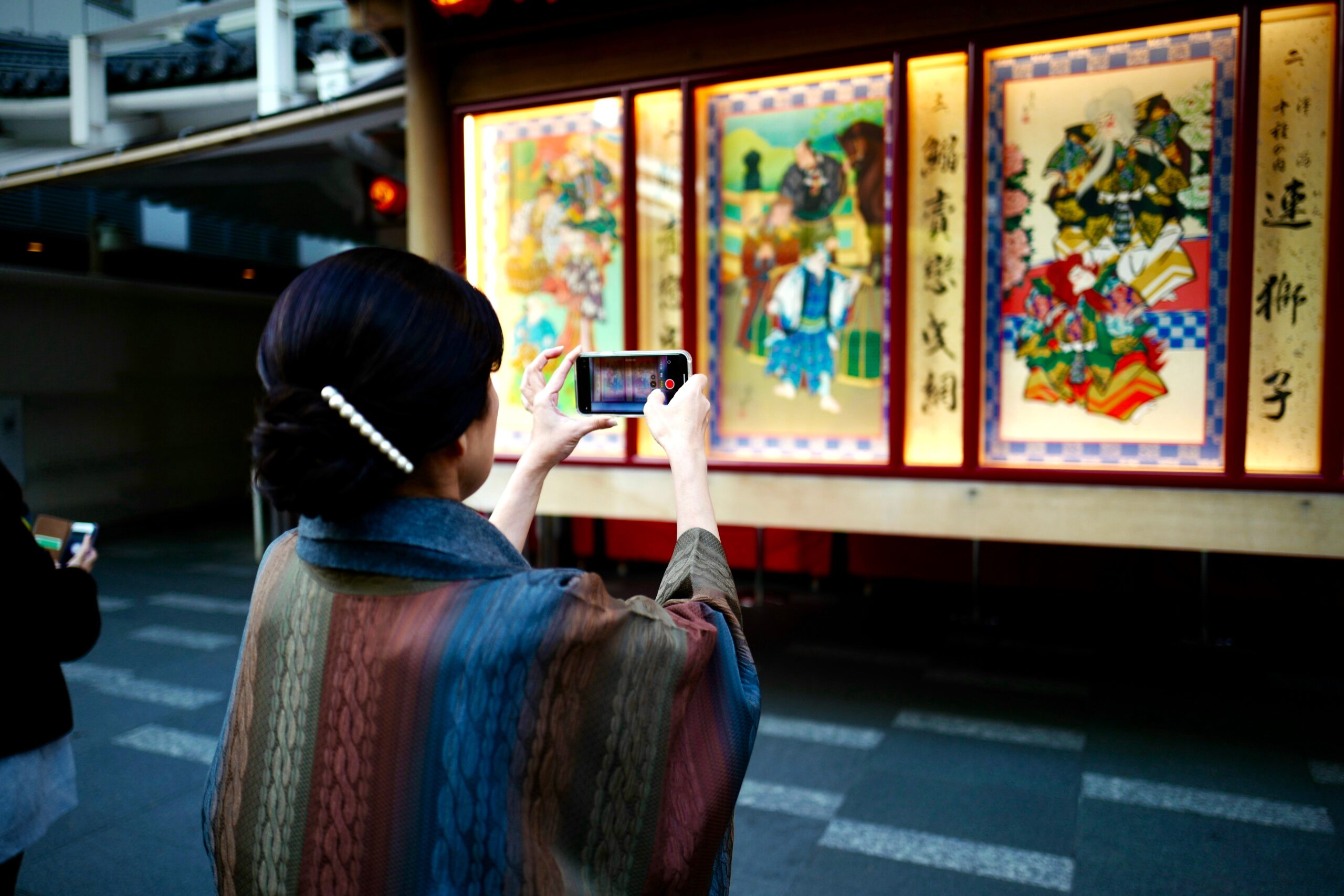Kabuki, with its splendid stages, unique productions, and profound storytelling, continues to captivate people worldwide. As one of Japan’s proudest traditional performing arts, how did Kabuki originate and evolve? What unique qualities and appeal does it possess compared to other theatrical forms around the globe? This article invites you into the deep and fascinating world of Kabuki.
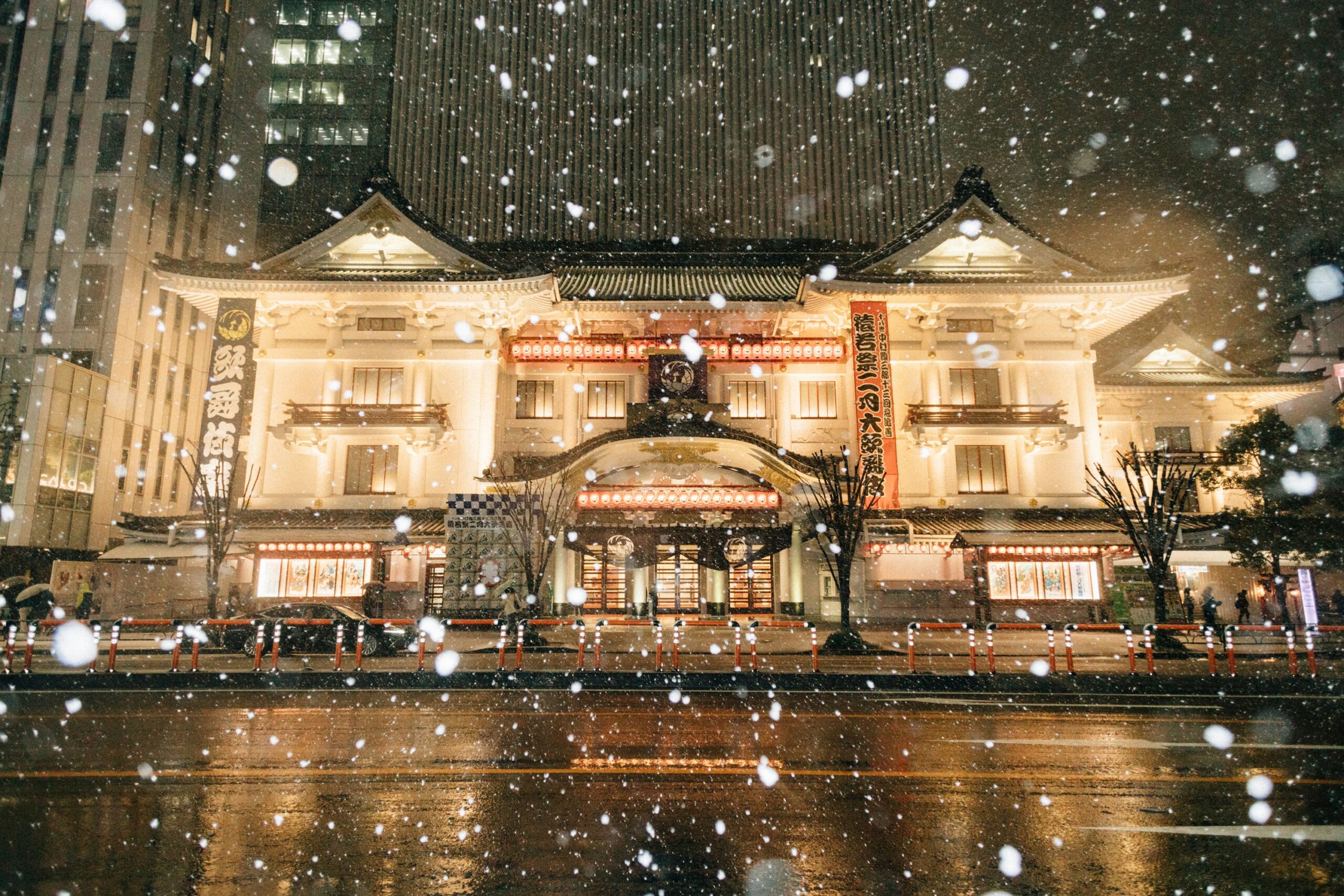
The History of Kabuki: From the Common People to the World Stage
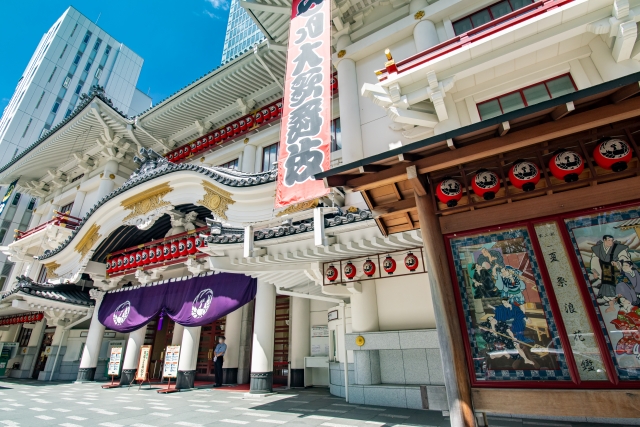
The origins of Kabuki trace back to the early 17th century. It began when a woman named Izumo no Okuni performed “kabuki odori” (kabuki dance) in Kyoto, dressed in eccentric attire and singing and dancing. The term “kabuki” means “out of the ordinary” or “eccentric,” and this performance was incredibly novel and appealing to the people of the time.
Initially, Kabuki performed by women and young men gained popularity, but due to moral concerns, it was frequently banned. Eventually, it transitioned to yarō kabuki (men’s kabuki), where all roles were played by adult men. This shift was a significant turning point, deepening Kabuki from a mere dance into a rich dramatic art form. The onnagata (female role specialists) were established, and their refined beauty and expressive power have remained a crucial element of Kabuki to this day. This development went beyond mere gender differences, evolving into a unique art form that pursued idealized feminine beauty.
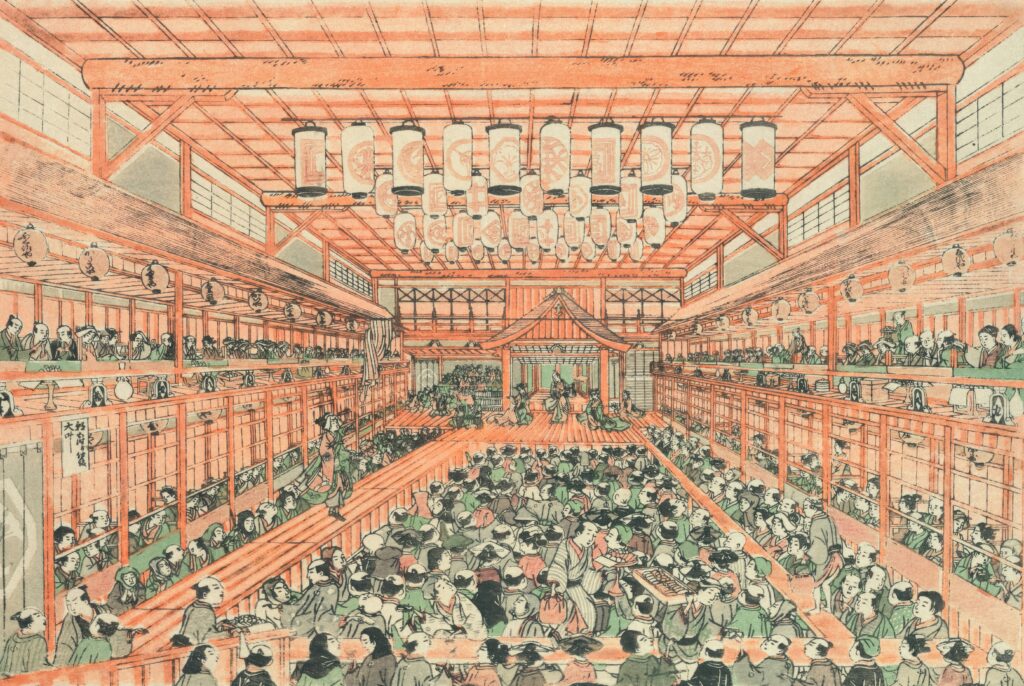
Throughout the Edo period, Kabuki flourished as a popular entertainment for common people. Playhouses buzzed with activity, and many audiences watched Kabuki, shedding tears and laughing at the stories. Although it experienced a period of decline after the Meiji Restoration, the dedication of its pioneers preserved this tradition. Today, Kabuki is a cultural treasure, registered as a UNESCO Intangible Cultural Heritage, proudly shared with the world.
Comparing Kabuki to Other Global Theatrical Arts: Its Uniqueness
Various theatrical cultures exist around the world. For instance, Western opera and ballet, Chinese Peking Opera, and Indian Kathakali each possess their own distinct styles and expressions. How does Kabuki stand out when compared to these theatrical forms?
1. Expressive Power as a Comprehensive Art Form
Kabuki, as its name suggests (Ka-bu-ki, meaning song, dance, and skill), is a comprehensive art form that integrates music (such as nagauta and gidayū), dance, and drama. Actors’ dialogue features unique melodic intonations, and their movements heavily incorporate dance elements.
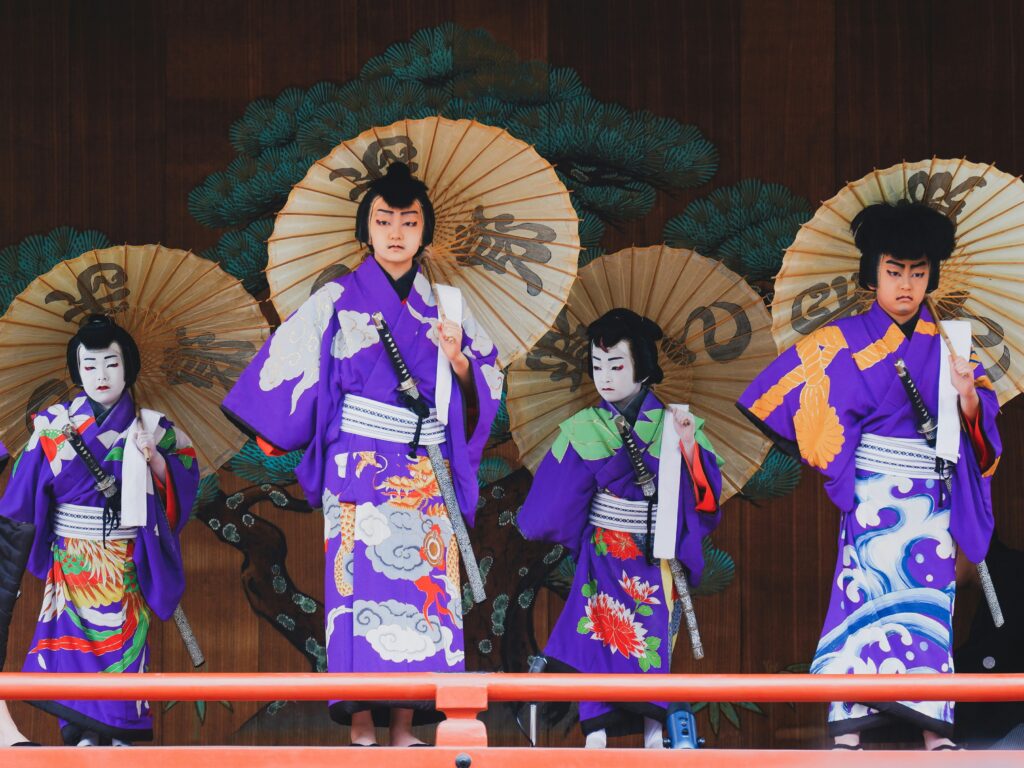
- Compared to Opera: While opera primarily expresses emotions and narratives through singing, Kabuki utilizes every element—song, dance, physical acting, facial expressions (mie), costumes, and makeup (kumadori)—to convey its message.
- Compared to Peking Opera: Peking Opera is also a comprehensive art form blending song, dance, and martial arts. However, Kabuki differs in its greater variety of stage sets and its more frequent portrayal of the daily lives of common people, closer to the real world. The symbolic meanings of kumadori colors also differ from those in Peking Opera.
Images: Chinese Peking Opera, Indian Kathakali
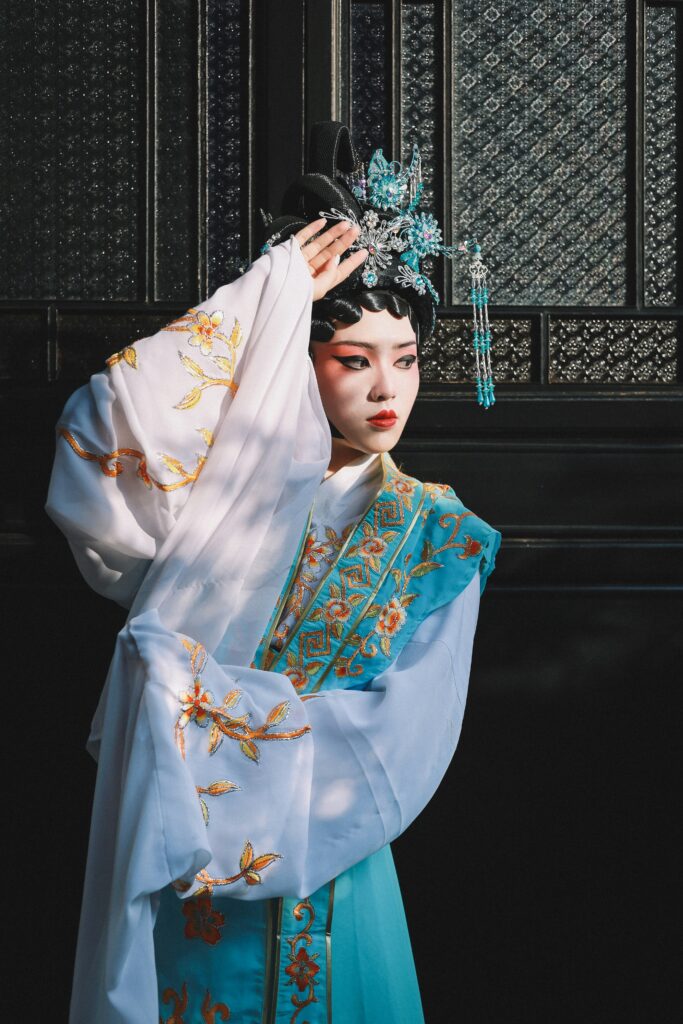
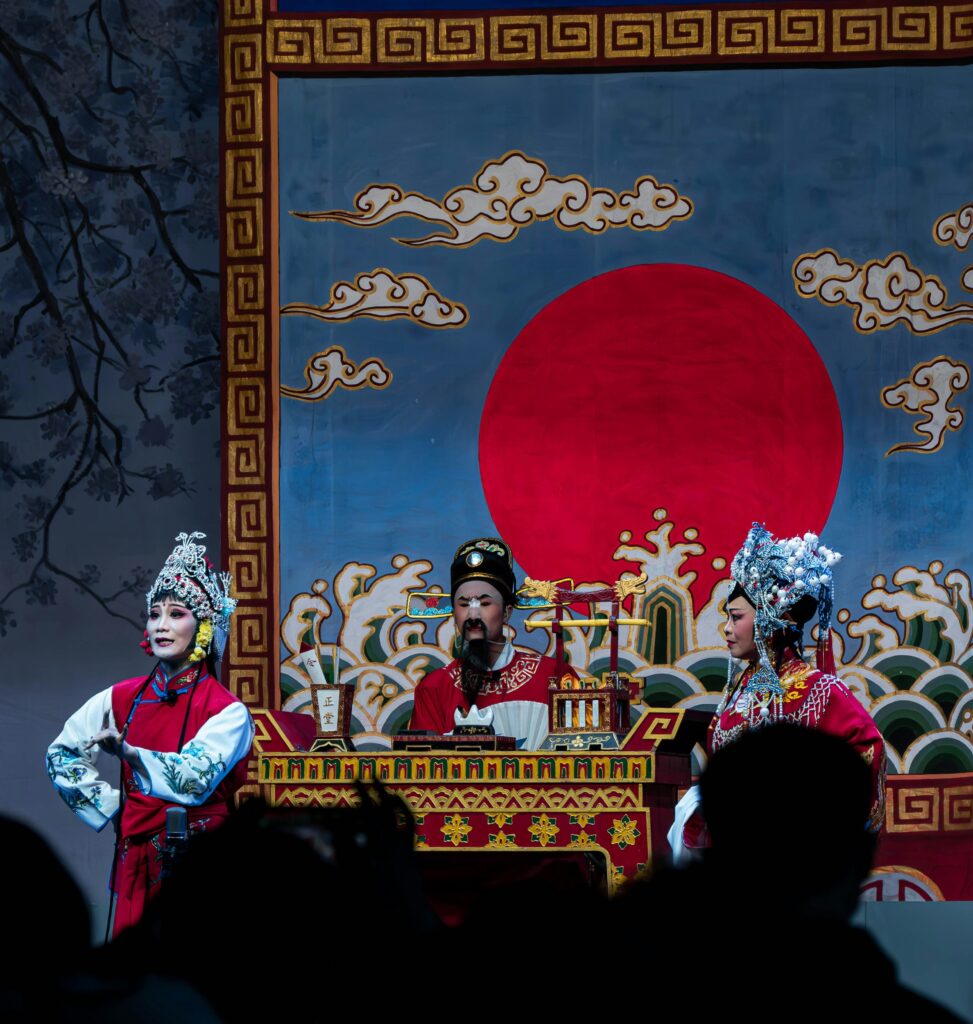
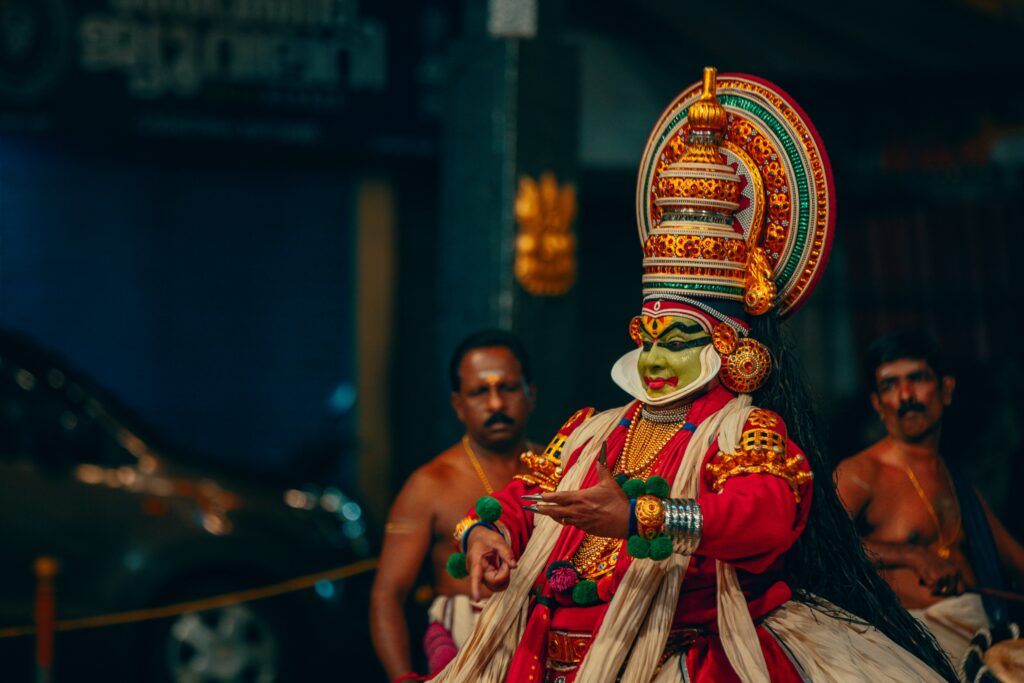
2. The Pinnacle of Visual Appeal: Costumes, Makeup, Stagecraft, and All-Male Performance
One of Kabuki’s greatest attractions is its overwhelming visual splendor.
- Lavish Costumes: Actors’ costumes are incredibly extravagant, richly adorned with embroidery and gold threads, meticulously designed for each role and scene. Their beauty truly makes them “moving works of art.”
- Symbolic Makeup (Kumadori): Kumadori is a unique makeup technique that symbolically expresses a character’s personality and emotions. For example, heroes often wear red kumadori, while villains might wear blue or brown, instantly revealing their character through colors and lines. This is a formalized aesthetic, distinct from Western theatre where emotions are expressed more naturally across the entire face.
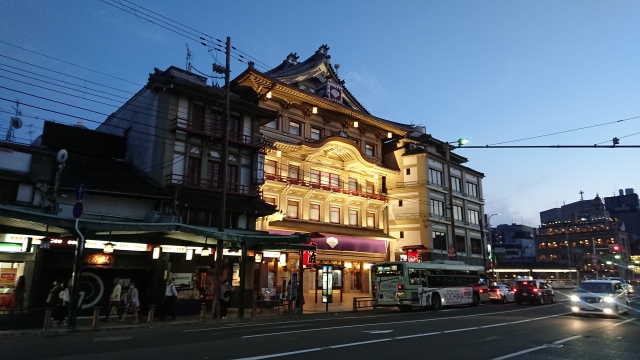
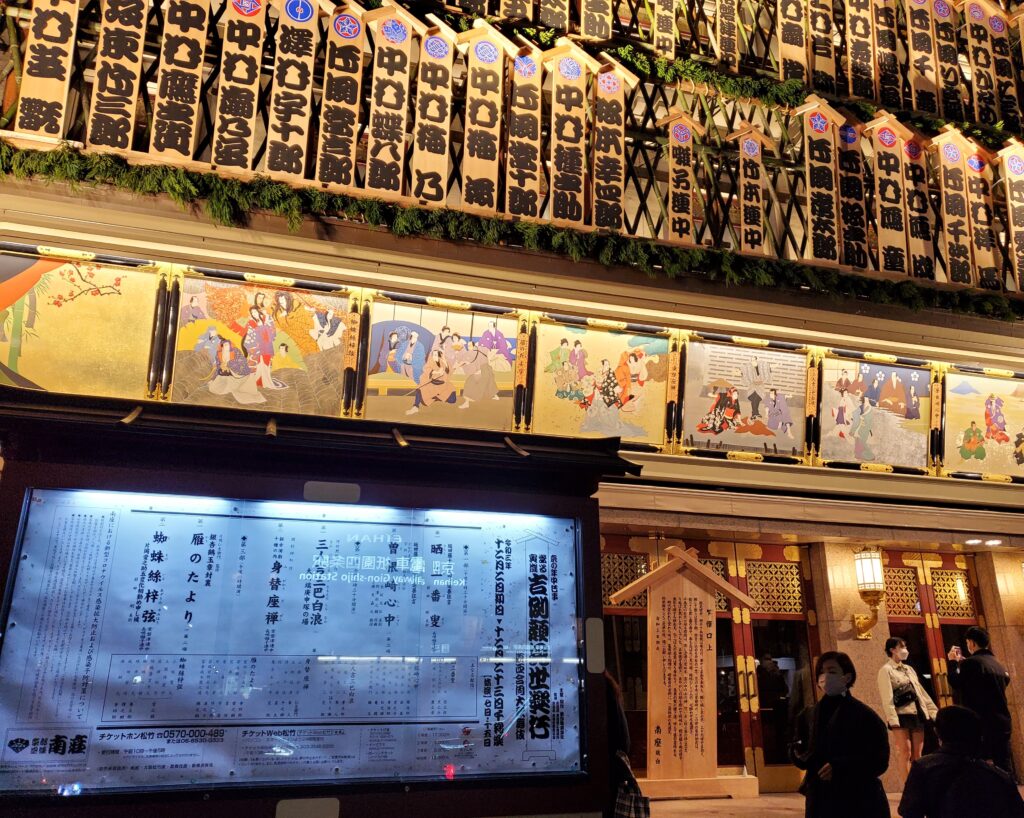
- Innovative Stagecraft: Kabuki boasts numerous original stage mechanisms, including the hanamichi (flower path), a walkway extending from the stage through the audience; the mawari butai (revolving stage); and seri (trapdoors) that allow parts of the stage to rise and descend. These devices are used for seamless scene changes and to heighten dramatic effect, drawing the audience deeper into the story. While Western theatre adopted advanced stage technology relatively recently, Kabuki actively utilized these innovative devices since the Edo period.
- All-Male Performance and Onnagata: A significant characteristic of Kabuki is that all performers are male. This stems from the historical context where early Kabuki by women and young men was prohibited due to moral concerns. Specifically, the onnagata (female role specialists) do not merely imitate women but developed a unique art form that strives for the ultimate expression of idealized feminine beauty, gestures, and emotions through a male body. Their precise expressiveness captivates audiences and is highly regarded as an art that transcends gender.
3. The Actor’s Art and Succession: Hereditary System and Kata
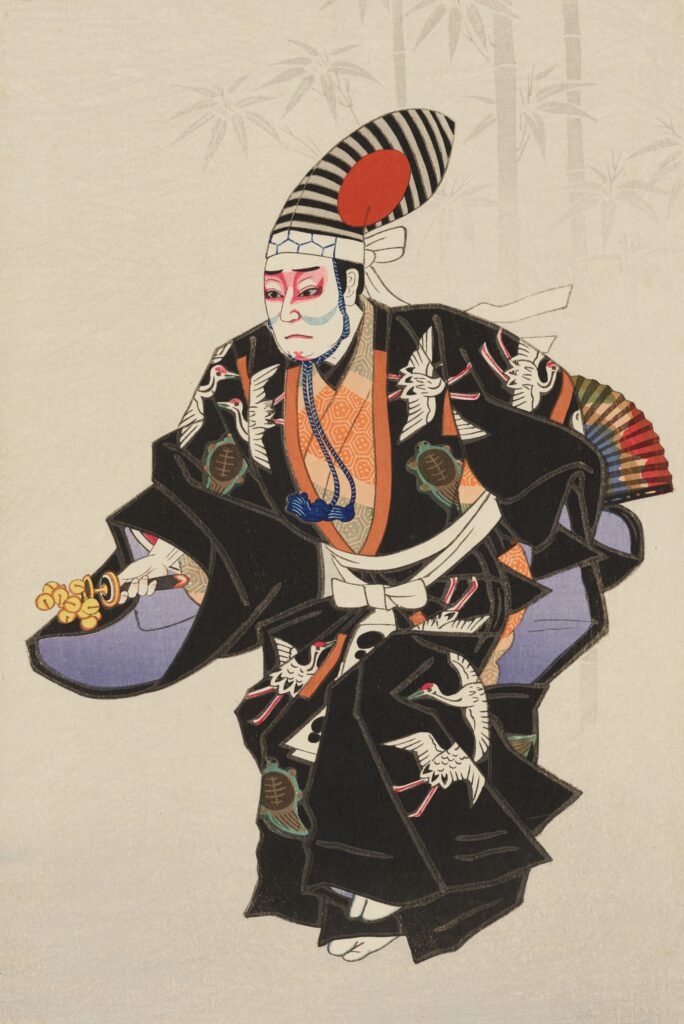
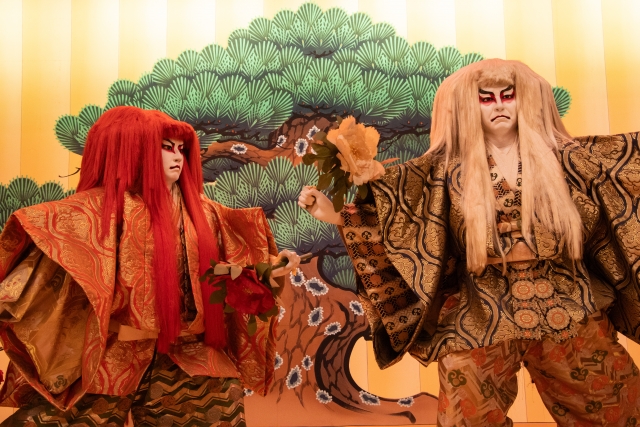
Kabuki actors typically follow a hereditary system, with the art passed down through generations. From a young age, they undergo rigorous training, learning the “kata” (stylized forms) of their predecessors. Kata refers to formalized patterns of character expression, movement, and dialogue. By inheriting these kata, Kabuki’s tradition is preserved. However, actors are not merely expected to imitate but also to infuse their own interpretations, creating new appeal. This balance between inheriting and innovating upon “kata” is what gives Kabuki its profound depth.
How Foreign Visitors Can Enjoy Kabuki
While Kabuki might seem to have a language barrier, various support systems are now in place, allowing foreign visitors to fully enjoy the experience.
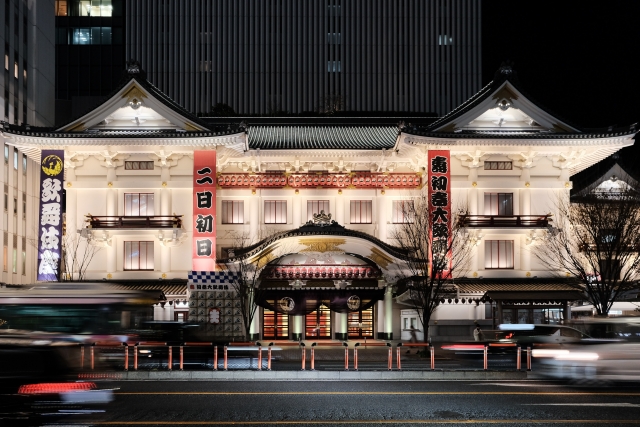
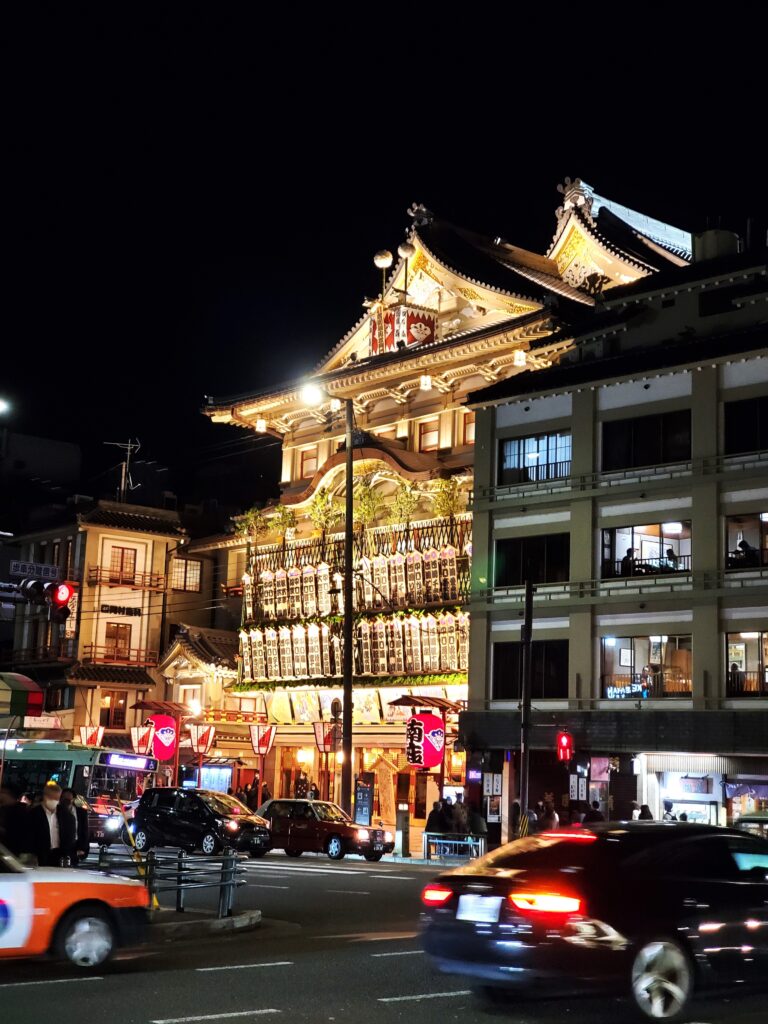
- Earphone Guides: These guides provide explanations of the plot, character descriptions, and cultural background in multiple languages (Japanese, English, etc.) synchronized with the performance. They are incredibly effective for a deeper understanding of Kabuki.
- Subtitle Guides: In some theaters, subtitle guides are available on monitors installed in the seats, displaying translations and explanations of the dialogue.
- Performances with Commentary: Special performances with commentary for foreign visitors, or productions designed to be easily understood by first-time viewers, are also held.
- Emphasis on Visual Elements: As mentioned, Kabuki is incredibly rich in visual elements, including costumes, makeup, stagecraft, and dance. Even if you don’t understand the dialogue, its overwhelming beauty and dramatic power will surely move you beyond words.
The Message Kabuki Conveys
Kabuki plays often depict universal themes such as good triumphing over evil, giri (duty) and ninjō (human emotion), the spirit of bushido, or the joys and sorrows of common people. These are messages that resonate with people across time and borders.
The fascinating characters in historical narratives, the exquisite dances, and the breathtaking performances of the actors will surely transport you to an extraordinary world, leaving you with unforgettable emotions.
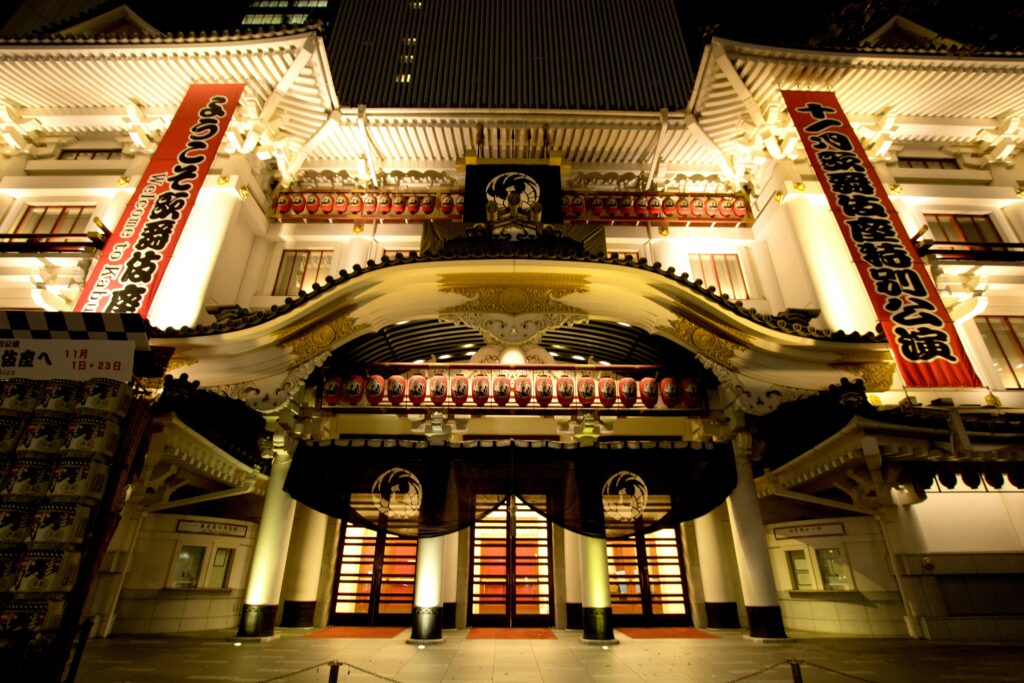
Kabuki is not merely an ancient theatrical form; it’s a living art that has been refined over more than 400 years. We highly recommend you visit a Japanese theatre and experience this dazzling traditional beauty with all your senses. For an even more immersive experience, consider visiting the historic Kabukiza Theatre in Tokyo, where the very architecture itself embodies Japanese tradition. Many Japanese Kabuki fans choose to wear kimonos, especially when sitting in the front rows, adding to the traditional atmosphere. If you go to Kabukiza, be sure to explore the souvenir shops for unique, Japan-themed gifts that you can only find there—they’ll surely become cherished mementos. Kabuki will deeply stir your heart, bringing new emotions and discoveries.

